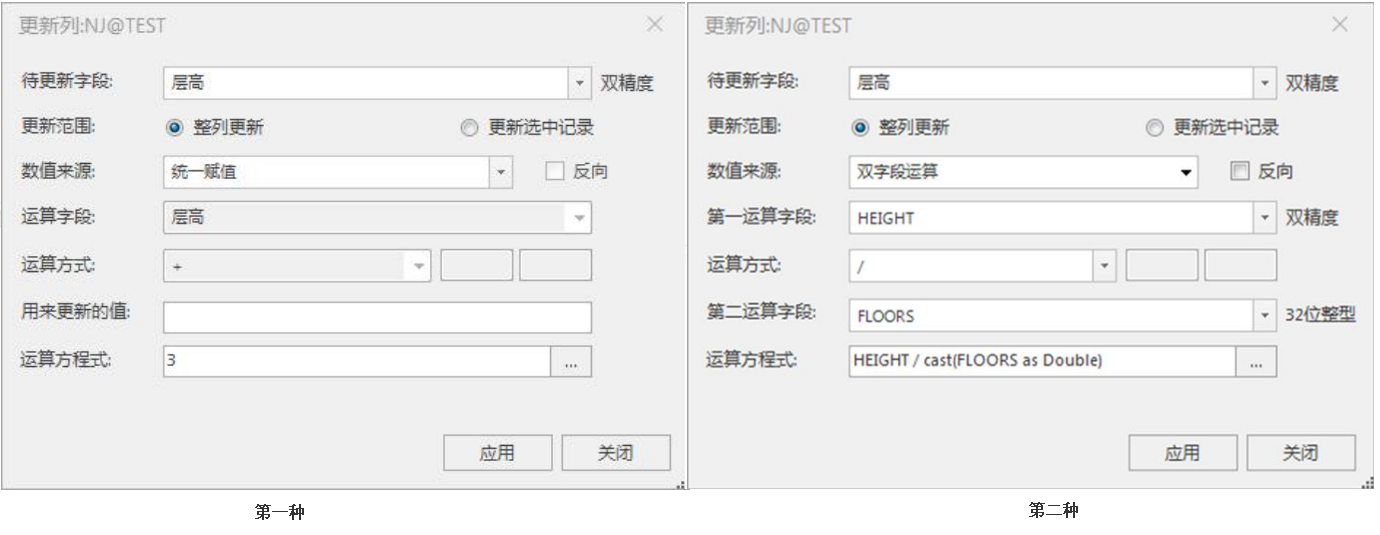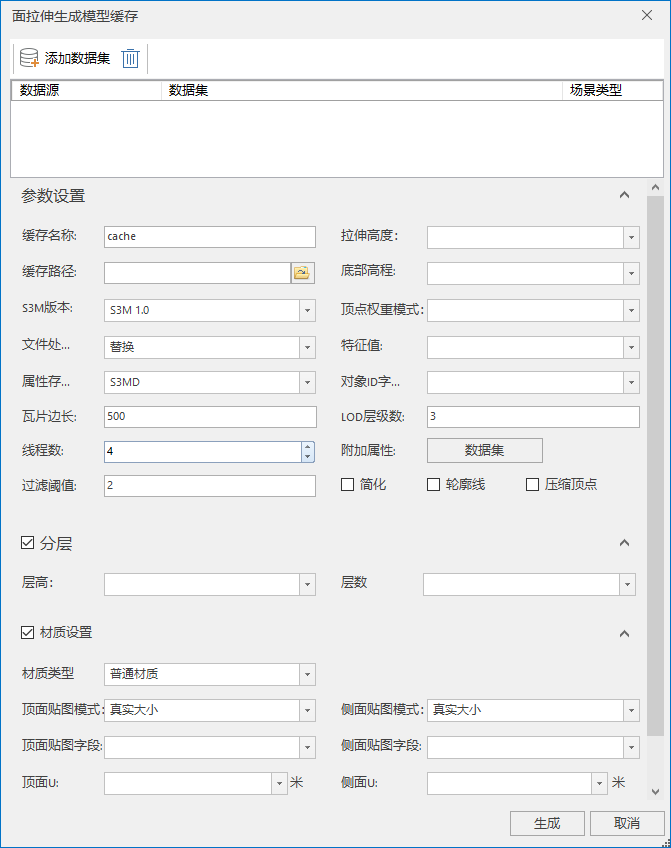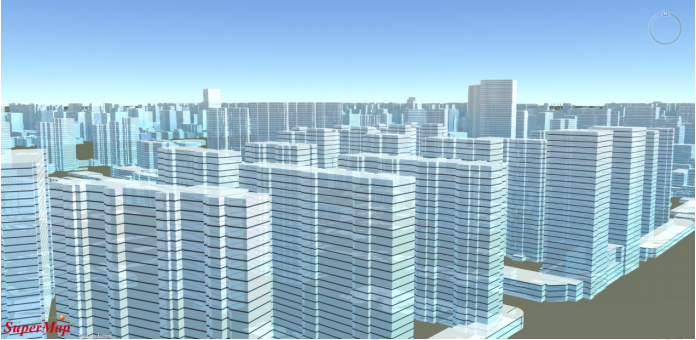The idea and process of vector surface stretching to generate model cache processing
Processing process
Take 2.4 million vector polygons as an example.
1. Data inspection: Open the attribute table of the data set, sort the data according to the field values of layer height and layer number, and delete invalid and obviously wrong surface data.
2. Story height preprocessing: The story height field is used as a parameter for subsequent layering of the tensile model data. If the tensile model data is not layered, this step can be skipped. If the data comes with building height, floor height, and number of floors, the desktop will automatically stretch and layer according to these three parameters, and this step will also be skipped.
3. Create a new layer height field: select the vector area dataset, right-click, select "Properties", click "Attribute Table" in the right attribute panel, click the Add button, and change the field name and alias to layer height , select Double for Type. Click the Apply button.
4. Add floor height field value: The setting of floor height field value can be divided into two categories: uniformly set the floor height to the specified height; floor height is obtained according to the floor height/floor number.
The first method: click the vector area dataset, right-click and select Browse Attribute Table. Select the layer height field, right-click and select Update Column. For example, the uniform setting is 3 meters.
Second method: update the floor height column, select the floor height field for the field to be updated, set the data source to "double field operation", select the building height field for the first operation field, operation method: divide, select floor for the second operation field number field. (HEIGHT is the height of the building, FLOORS is the number of floors, and the division of the two is the floor height.)

The first method: click the vector area dataset, right-click and select Browse Attribute Table. Select the layer height field, right-click and select Update Column. For example, the uniform setting is 3 meters.
Second method: update the floor height column, select the floor height field for the field to be updated, set the data source to "double field operation", select the building height field for the first operation field, operation method: divide , select floor for the second operation field number field. (HEIGHT is the height of the building, FLOORS is the number of floors, and the division of the two is the floor height.)
6. Surface stretching to generate model cache: stretch vector surface data to generate model cache. Click "3D Data" - "Generate Cache" - "Generate Model Cache by Surface Extrusion", the interface is as follows:

7. Stretch height: the total height of the building
8. Bottom elevation: the bottom elevation value of the building
9. Number of LOD levels: hierarchical display of architectural models
10. Filter threshold: In the rough layer, filter out objects whose pixels are smaller than the threshold
11. Outline: the data generates an outline, which can display the building outline in a quadrilateral mode when loaded on the web side
12. Simplification: Whether the LOD layer triangulation is simplified
13. Texture mode: support real size, the actual size of the texture (meters); two modes of repetition times, the number of repetitions of the texture (times)
14. UV field: U: horizontal direction of texture, V: vertical direction of texture
15. Texture field: the relative path field of the texture
16. S3M version: S3M 2.0 version is required, S3M 2.0 version supports pbr material
17. Attribute storage type: ATTRIBUTE supports downloading specified fields (the attribute does not need to be downloaded entirely, downloading specified fields improves performance)
18. After setting the parameters, click Generate to generate the model cache
